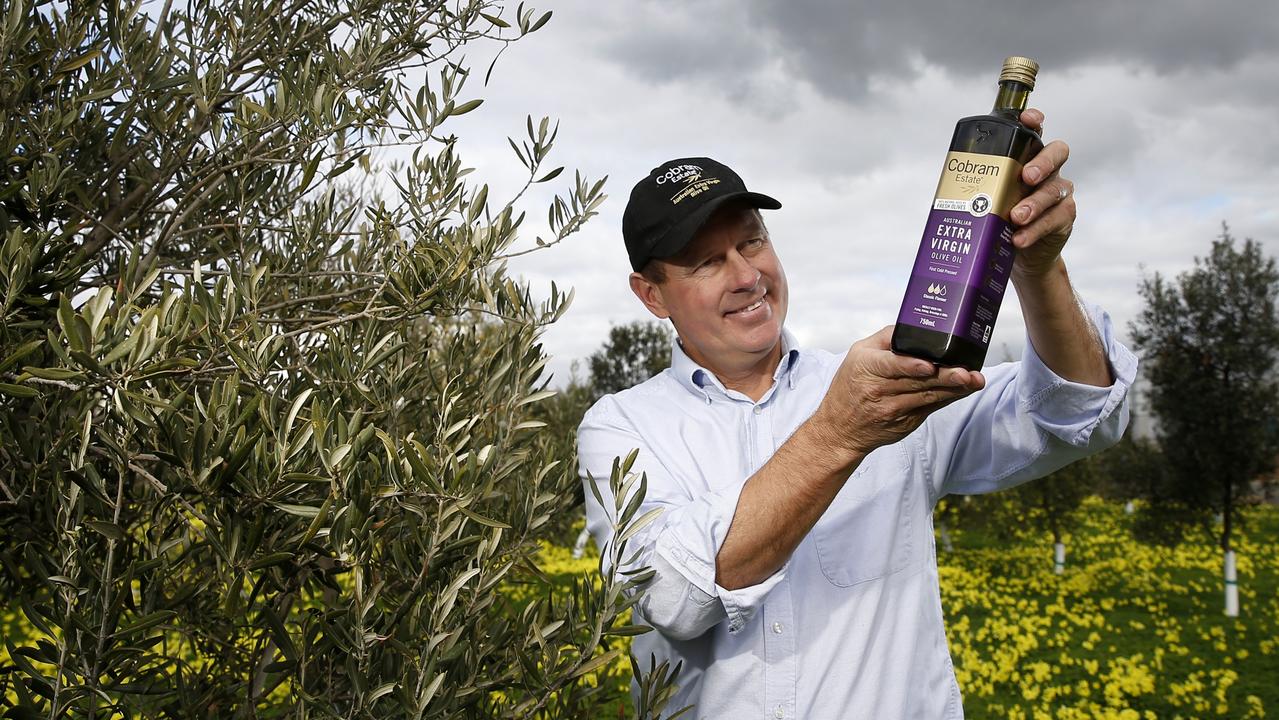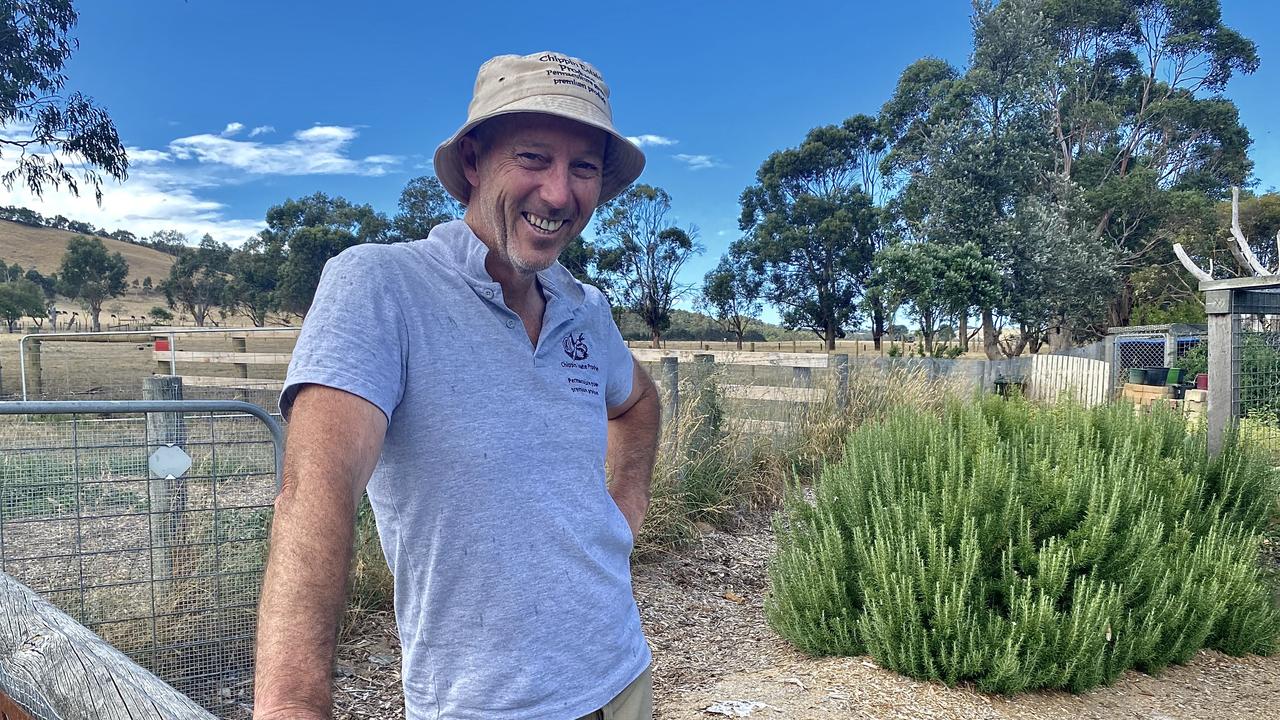Wild Bear Hereford stud profits from Canadian genetics
Livestock buyer Ben Davies has gone from dabbling in breeding to running a successful Hereford stud. Here’s how.
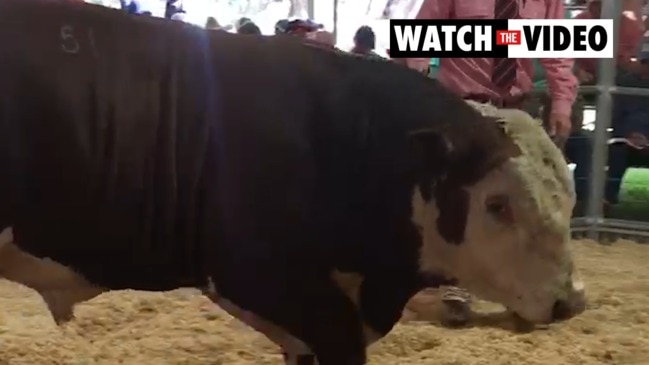
Being gifted two stud heifers as a wedding present might seem curious for some but it was the ultimate favour for Ben and Katelin Davies.
The gift helped kick start their mutual dream of owning their own Hereford stud.
Now, 10 years on, they are in a position to offer six bulls from their Wild Bear Hereford stud at the upcoming Hereford National Show and Sale at Wodonga in May.
“Even though we started in 2011, the first four or five years were just buying females in and growing our herd slowly,” Ben said.
“We are in the early days so we are four years in selling bulls annually. We are slowly growing our client base and seeing our cattle start to perform.”
The couple farm at Meadows among the vineyards and apple orchards in the picturesque Adelaide Hills, half an hour from the city where Ben works as assistant livestock manager for Thomas Foods International.
The couple both grew up in the stud breeding business.
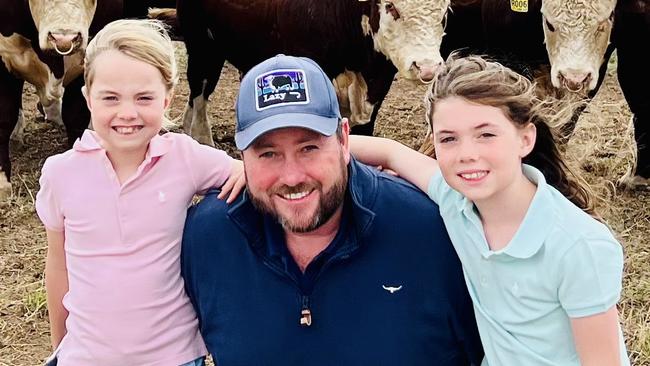
Ben’s father was a stud manager at Heyfield so Ben spent much of his youth competing in carcass competitions and royal shows. Katelin’s family run Wild Bear Hereford stud in Canada and have been in the game for 30 years.
The pair initially introduced Canadian genetics through embryo transfer from Katelin’s family herd south of Calgary, and have coupled that with local genetics to try and breed an animal that is commercially relevant.
“We genomic test all our female herd plus all our sale bulls to try and get linkage between our genetics and get more accuracy within our EBVs,” Ben said.
“Even though we are a small herd we try and link our cattle with other breeders and other animals so we can get more accuracy in our traits that we are trying to select for so our clients can have confidence in the cattle they are purchasing.”
They run 40 breeders on 60 hectares and currently market about 10 bulls a year.
Their focus is the weaner sale market and clients who grow cattle for premium grass-fed outlets.
“What we are trying to do is breed a Hereford that is going to be relevant to today’s production systems,” Ben said.
“Cattle that will marble and yield and that still get back in-calf and be commercially relevant on a property. It is a fine line of pushing that meat or carcass side of things while maintaining economic traits and getting cows back in-calf on the farm.”
The herd is spring calving and half are horned, half are polled. They focus on functional, sound cattle with correct structure and couple that with low birth weight, high growth and above average EMA and IMF EBVs. Temperament is also important.
“Temperament is a very big thing for our family because with my wife and children heavily involved we like very quiet livestock,” Ben said.
The Davies send several steers away each year to compete in carcass competitions with local schools and shows. Their steer came fourth in his class against a variety of breeds at last year’s Adelaide Royal.
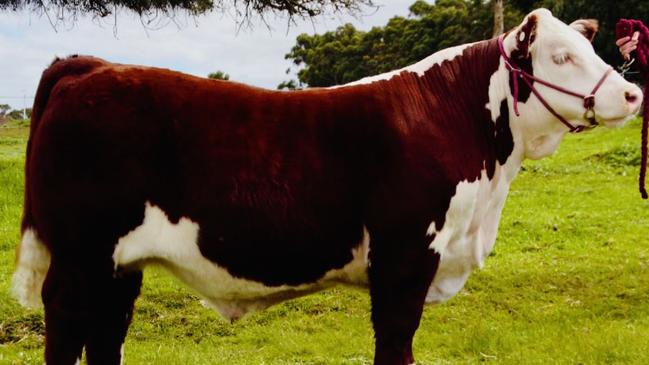
“It was the highest scoring Hereford entered,” Ben said.
“We’ve done it three years running now and it is very hotly contested. There are 180 to 200 head a year entered.”
Ben and Katelin’s two daughters Elle, 8, and Emma, 6, are just starting to join the junior handler ranks.
“We enjoy donating cattle to local schools,” Ben said.
“It was a big thing for both Katelin and myself helping with junior programs and getting people involved in agriculture going forward is something we like to do.”
Numbers are at capacity for their farm but the couple hopes to grow the herd in the next few years by outsourcing ET work and possibly buying another property.
They run a successful AI program with all females calving at two years old. Cull yearlings are sold at 11-13 months in the 400-500kg bracket.
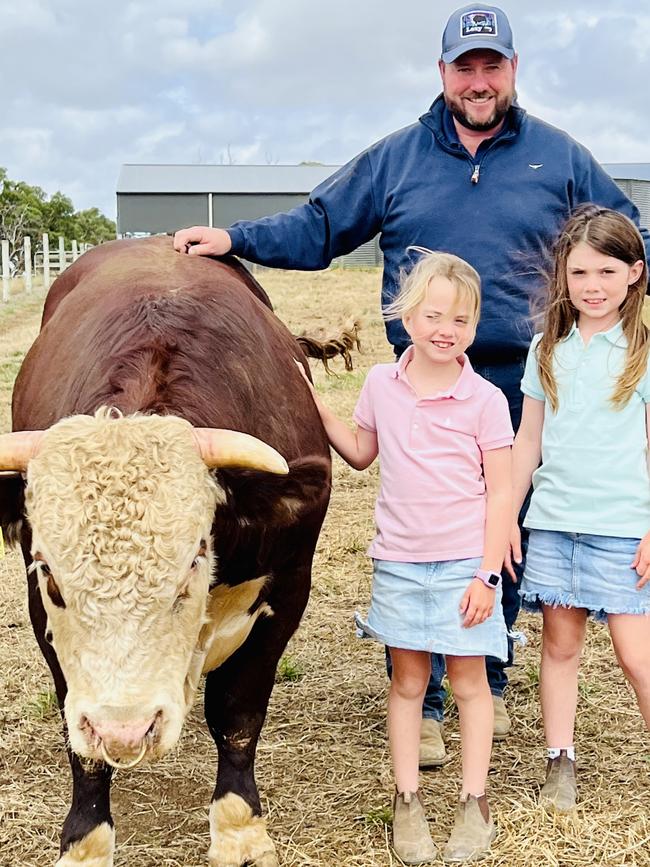
Calves are weaned using the Canadian Quiet Wean nose tabs, a two-stage low-stress method involving a nose-flap that prevents calves from nursing but allows them to graze and still be in contact with their mother.
“We’ve been using the nose tabs for three years and found them very good and effective,” Ben said.
“We find that there is less stress on the weaners and they calm down well in the yards. They take on feeding well and probably don’t lose anywhere near the weight of traditional weaning.”
The Davies recently took part in Beef Week for the first time joining forces with Nampara Angus and High Ridge South Devons to display three different breeds at once on their property. This was a good platform to help build their profile and market sale bulls.
Ben said the economics of the stud had to “stack up”.
“We try to run it as a profitable entity. It is our hobby but at the same time we like our cattle to pay their way,” he said.



